This blog post is all about St. Patrick’s day traditions and its meanings
St. Patrick’s Day, celebrated every year on March 17th, is a vibrant and widely recognized occasion that honors Ireland’s patron saint.
With its rich cultural roots and global reach, this day has evolved into a festive celebration that brings people of all backgrounds together.
From its origins in Ireland to its widespread observance around the world, St. Patrick’s Day is marked by an array of lively customs and practices that continue to captivate and inspire.
In this post, we’ll explore the significance of these traditions and why they remain so meaningful today.
21 UNIQUE ST. PATRICK’S DAY TRADITIONS
1. Wearing Green
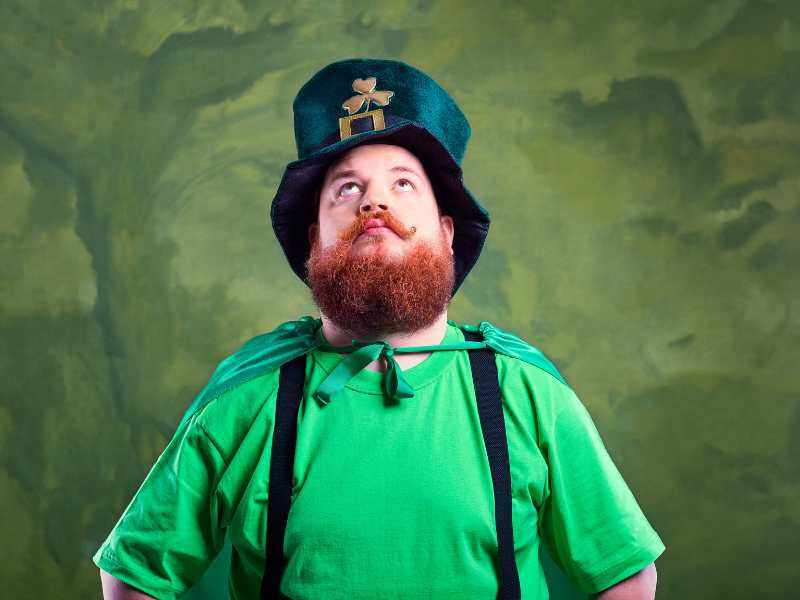 Wearing green has a deep-rooted connection to Ireland, symbolizing its lush landscape and the color associated with Irish nationalism during its struggle for independence.
Wearing green has a deep-rooted connection to Ireland, symbolizing its lush landscape and the color associated with Irish nationalism during its struggle for independence.
Green also represents the shamrock, a symbol used by St. Patrick to explain the Holy Trinity.
On this day, people don green clothing, hats, and accessories, while many go further with face paint or green wigs to show their festive spirit.
2. Pinching Those Not Wearing Green
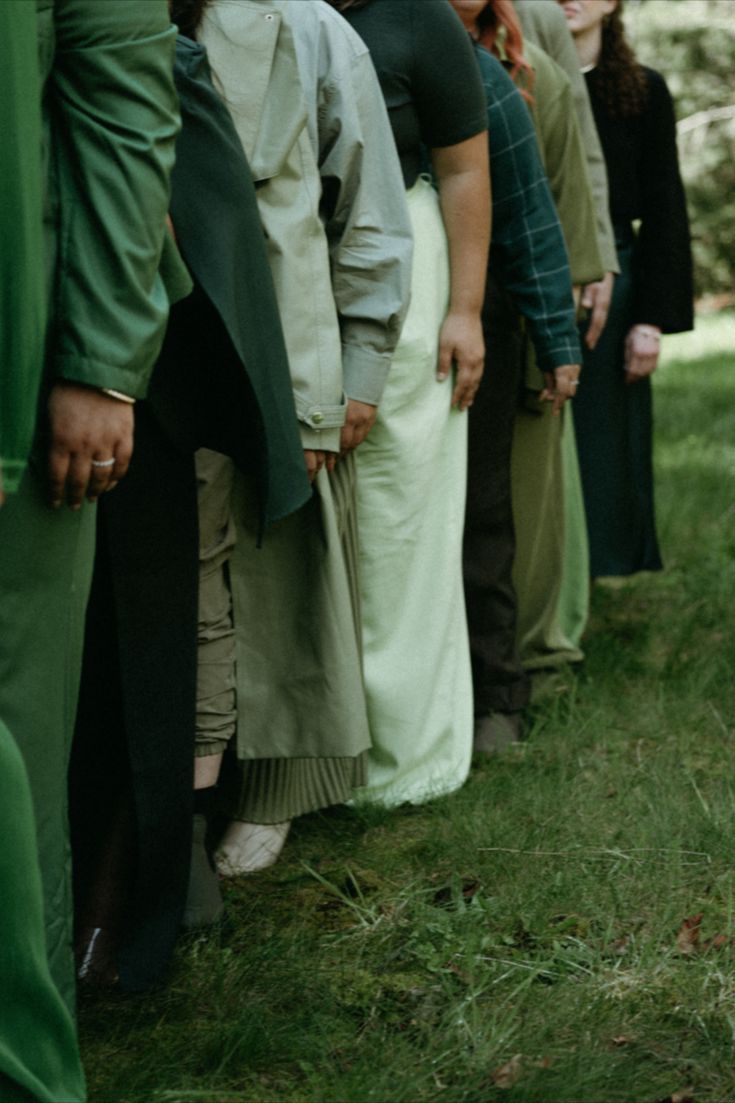
This playful tradition dates back to folklore where leprechauns, mischievous Irish fairies, were said to pinch anyone they could see.
Wearing green made you invisible to them, so anyone not wearing green on St. Patrick’s Day might get a pinch to remind them of the superstition.
3. Enjoying Irish Food and Drinks
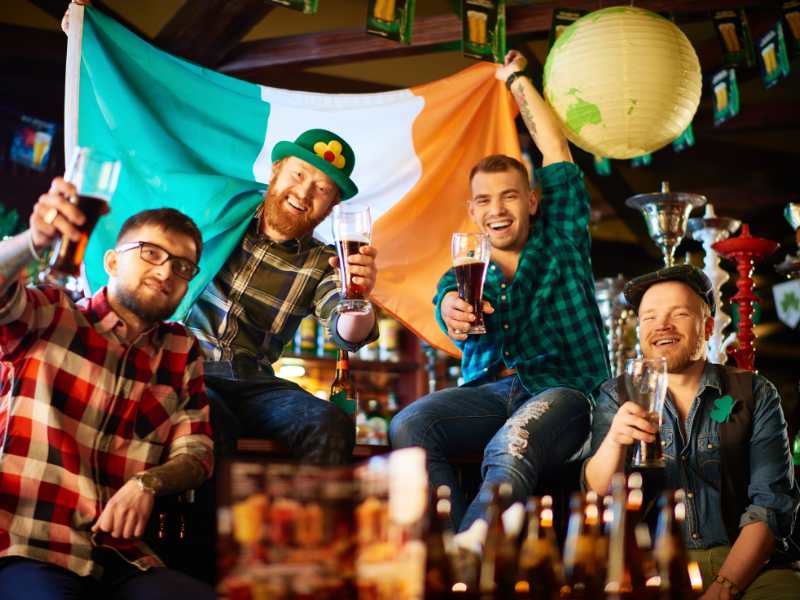 Irish cuisine takes center stage on St. Patrick’s Day, with iconic dishes like corned beef and cabbage, a hearty combination that became popular among Irish immigrants in America.
Irish cuisine takes center stage on St. Patrick’s Day, with iconic dishes like corned beef and cabbage, a hearty combination that became popular among Irish immigrants in America.
Irish soda bread, with its unique texture and slight sweetness, is a staple, while shepherd’s pie offers a rich, savory option.
For beverages, Guinness stout and Irish whiskey are favorites, often used in Irish coffee or celebratory toasts.
4. Attending Parades
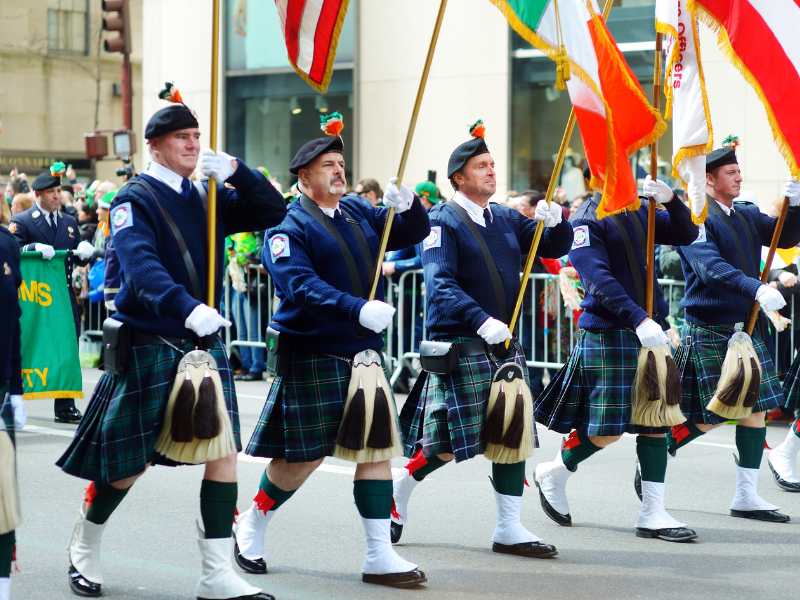
St. Patrick’s Day parades are vibrant celebrations of Irish culture.
Featuring marching bands, Irish dancers, community floats, and costumed performers, these parades are held worldwide, with major events in Dublin, New York City, and Chicago.
They provide a communal way for people of all backgrounds to celebrate Irish heritage.
5. Dyeing the River Green

A unique Chicago tradition since 1962, dyeing the river green has become an iconic way to celebrate the holiday.
Using a secret, eco-friendly formula, the river is transformed into a bright green spectacle for a few hours, drawing spectators from across the globe.
6. Baking Green-Themed Treats
 Green desserts, like shamrock-shaped cookies, mint-flavored cupcakes, and green velvet cakes, add a sweet touch to the day.
Green desserts, like shamrock-shaped cookies, mint-flavored cupcakes, and green velvet cakes, add a sweet touch to the day.
Many incorporate Irish-inspired ingredients such as Baileys Irish Cream or whiskey into desserts to align with the holiday’s theme.
7. Planting Shamrocks
 The shamrock, a three-leaf clover, is a prominent symbol of Ireland.
The shamrock, a three-leaf clover, is a prominent symbol of Ireland.
According to legend, St. Patrick used it to explain the Christian doctrine of the Holy Trinity.
On St. Patrick’s Day, people plant shamrocks as a symbol of faith, hope, and luck.
8. Searching for Leprechaun Gold
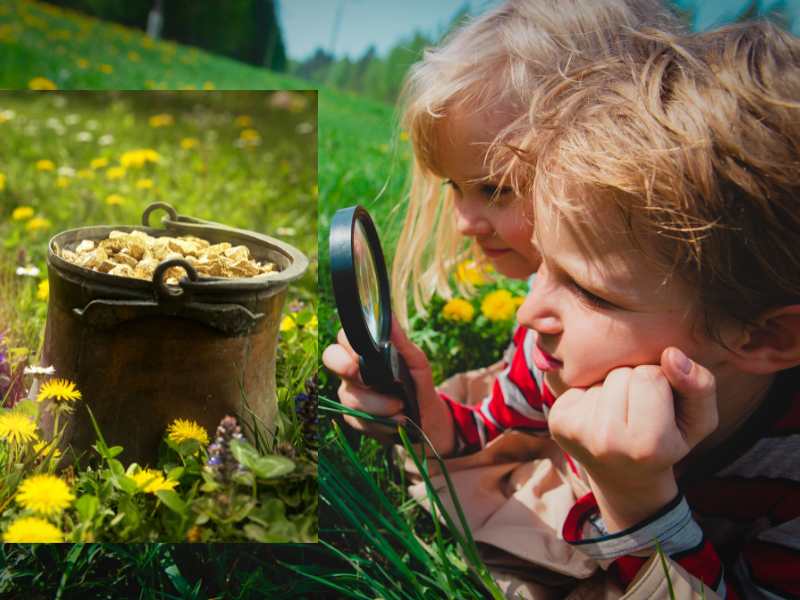 This fun activity engages children in imaginative play by setting traps to catch leprechauns or searching for “gold coins” (often chocolate coins wrapped in gold foil).
This fun activity engages children in imaginative play by setting traps to catch leprechauns or searching for “gold coins” (often chocolate coins wrapped in gold foil).
The idea is tied to the legend of leprechauns hiding their pots of gold at the end of rainbows.
This is one of the St. Patrick’s day traditions that fun filled.
9. Listening to Irish Music
 Traditional Irish music, featuring fiddles, flutes, harps, and bodhráns (a type of drum), creates a lively and celebratory atmosphere.
Traditional Irish music, featuring fiddles, flutes, harps, and bodhráns (a type of drum), creates a lively and celebratory atmosphere.
Songs like “Danny Boy” and upbeat jigs or reels are common.
Many families and communities hold ceilidhs, or traditional Irish music and dance gatherings.
10. Learning Irish Dancing
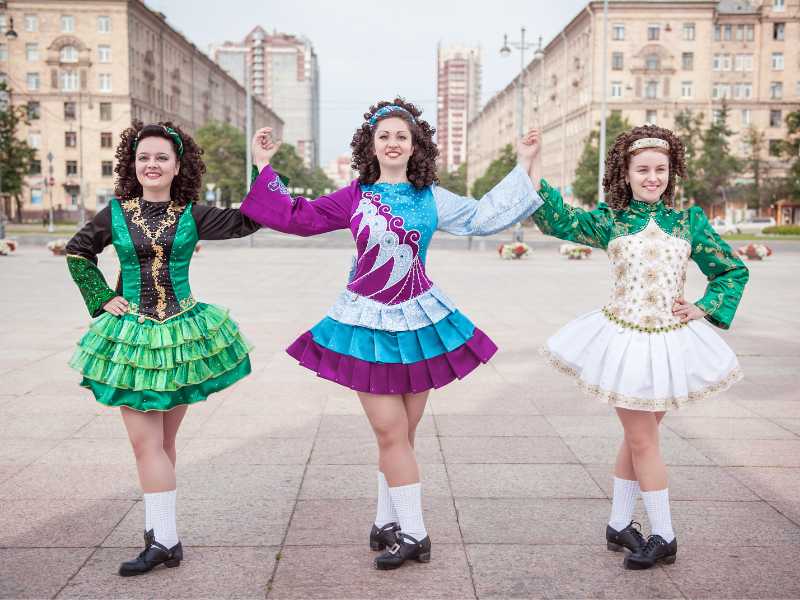 Irish step dancing, known for its intricate footwork and rigid upper body, is showcased during the holiday.
Irish step dancing, known for its intricate footwork and rigid upper body, is showcased during the holiday.
Dance schools often perform during parades and local events, and some communities offer workshops for people to learn the basics.
11. Attending a Celtic Festival
 Celtic festivals are immersive cultural events where attendees can enjoy live performances, storytelling, and historical reenactments.
Celtic festivals are immersive cultural events where attendees can enjoy live performances, storytelling, and historical reenactments.
These festivals provide a richer understanding of Irish traditions beyond the typical St. Patrick’s day traditions celebrations.
12. Making Irish Crafts
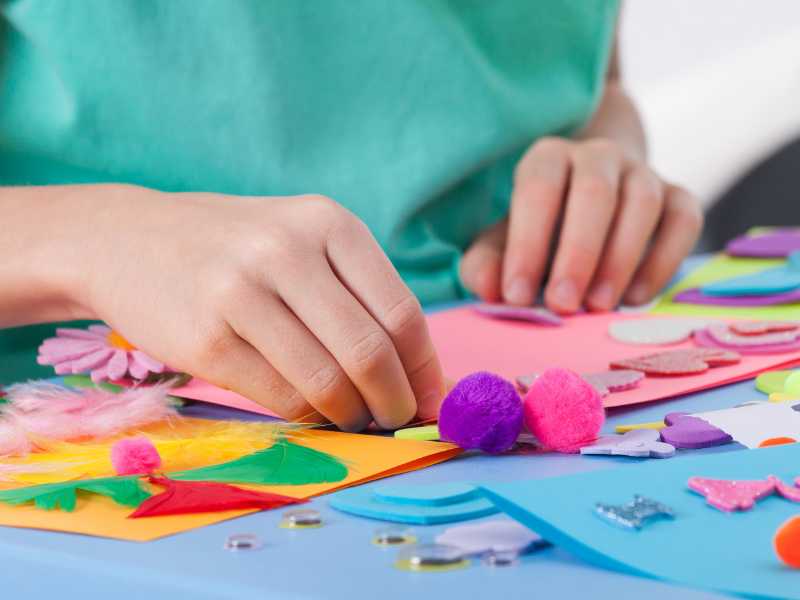 Crafting shamrock wreaths, leprechaun hats, or even homemade Irish flags allows families and communities to embrace the holiday creatively.
Crafting shamrock wreaths, leprechaun hats, or even homemade Irish flags allows families and communities to embrace the holiday creatively.
DIY crafts are a wonderful way to decorate your home and involve children in the festivities.
13. Visiting Irish Pubs
 Irish pubs worldwide host lively celebrations with traditional music, themed decorations, and authentic Irish food.
Irish pubs worldwide host lively celebrations with traditional music, themed decorations, and authentic Irish food.
These gatherings allow patrons to connect with the communal spirit of St. Patrick’s Day while enjoying pints of Guinness or Irish-inspired cocktails.
14. Learning About St. Patrick
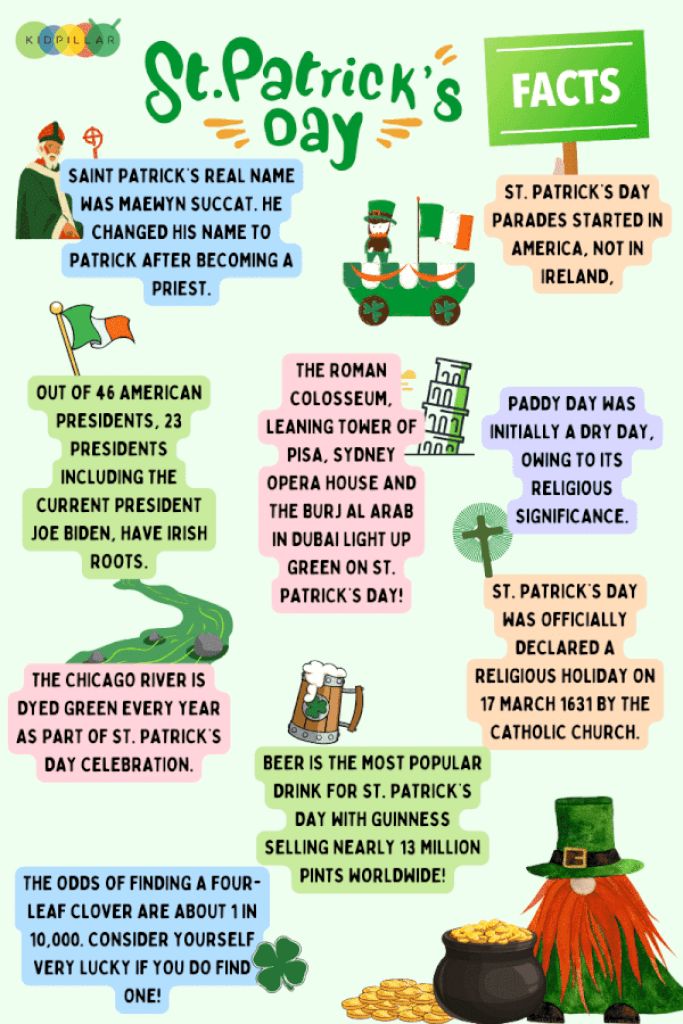 Understanding the historical and religious significance of St. Patrick enhances the holiday’s meaning.
Understanding the historical and religious significance of St. Patrick enhances the holiday’s meaning.
He is credited with bringing Christianity to Ireland and is celebrated for using the shamrock to teach Christian theology.
Reading his story or attending church services in his honor connects the festive traditions to their spiritual origins.
15. Tracing Irish Heritage
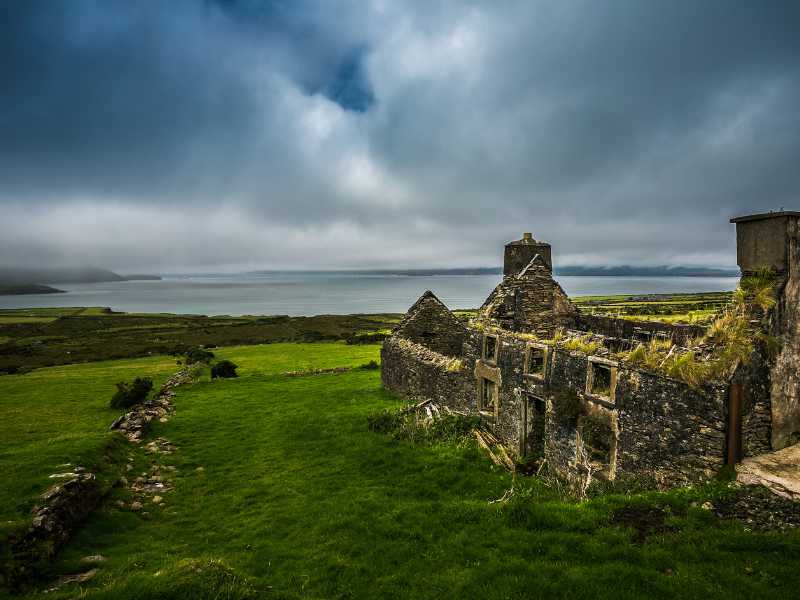 St. Patrick’s Day is a perfect occasion to dive into genealogy, exploring family history and Irish roots.
St. Patrick’s Day is a perfect occasion to dive into genealogy, exploring family history and Irish roots.
Websites like Ancestry.com often provide free tools or special features to help individuals uncover their Irish lineage.
16. Decorating with Irish Symbols
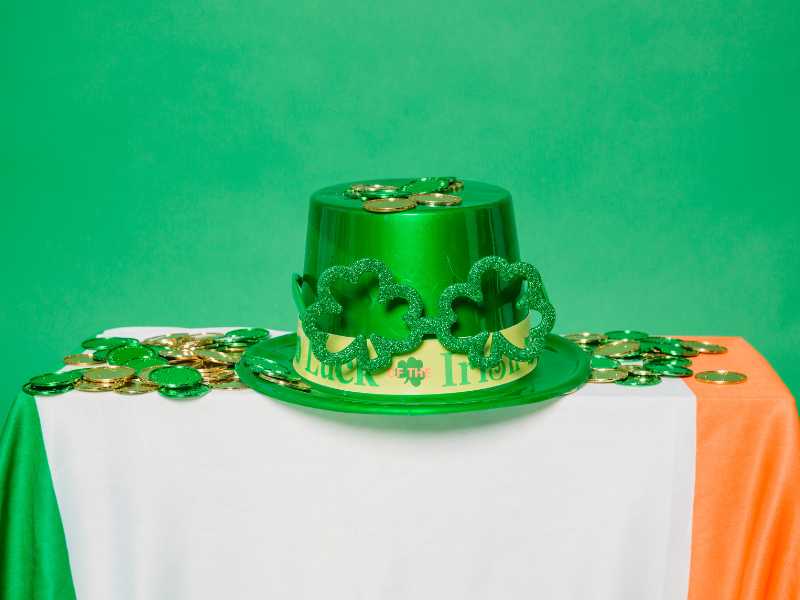 Adorning homes with symbols like Celtic crosses, green garlands, and leprechaun figurines sets a festive tone.
Adorning homes with symbols like Celtic crosses, green garlands, and leprechaun figurines sets a festive tone.
The Irish tricolor flag, representing Ireland’s Catholic and Protestant communities and peace between them, is often displayed.
17. Participating in Charity Runs
 St. Patrick’s Day charity runs, often dubbed “Shamrock Shuffles” or “Leprechaun Dashes,” are a fun way to stay active while supporting causes.
St. Patrick’s Day charity runs, often dubbed “Shamrock Shuffles” or “Leprechaun Dashes,” are a fun way to stay active while supporting causes.
Participants often dress in green or wear festive accessories, making the event both impactful and entertaining.
18. Making Rainbow Crafts
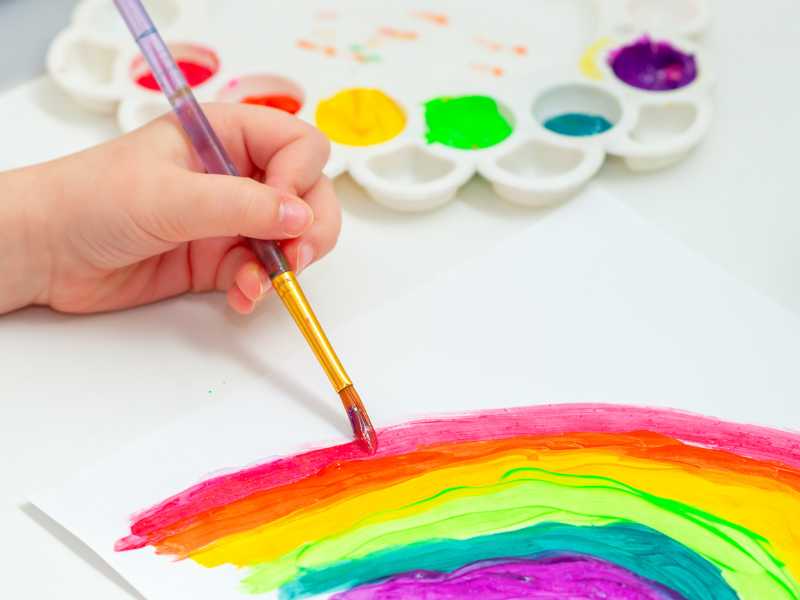 Rainbows, tied to the legend of leprechauns and their hidden gold, are a colorful theme for crafts.
Rainbows, tied to the legend of leprechauns and their hidden gold, are a colorful theme for crafts.
Families create rainbow garlands, paintings, or even rainbow-themed desserts to add vibrancy to their celebrations.
19. Hosting an Irish Movie Night
 Irish cinema offers a mix of genres, from romantic comedies like Leap Year to historical dramas like Michael Collins.
Irish cinema offers a mix of genres, from romantic comedies like Leap Year to historical dramas like Michael Collins.
Hosting a movie night with an Irish theme provides an entertaining yet relaxing way to celebrate.
20. Enjoying Irish Poetry or Literature
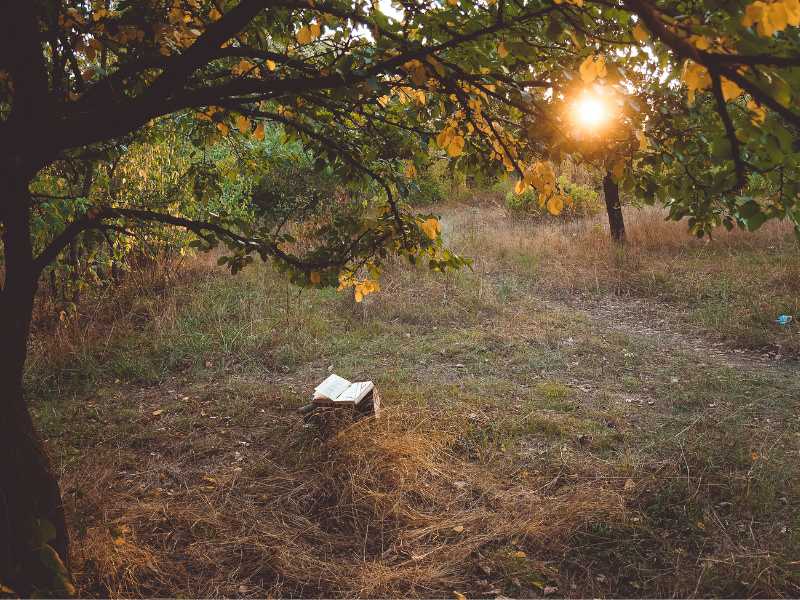 Ireland boasts a rich literary heritage, with works by authors such as Oscar Wilde, W.B. Yeats, and Seamus Heaney.
Ireland boasts a rich literary heritage, with works by authors such as Oscar Wilde, W.B. Yeats, and Seamus Heaney.
Reading Irish poetry or short stories during the holiday fosters a deeper appreciation for the country’s cultural contributions.
21. Lighting Up Landmarks in Green
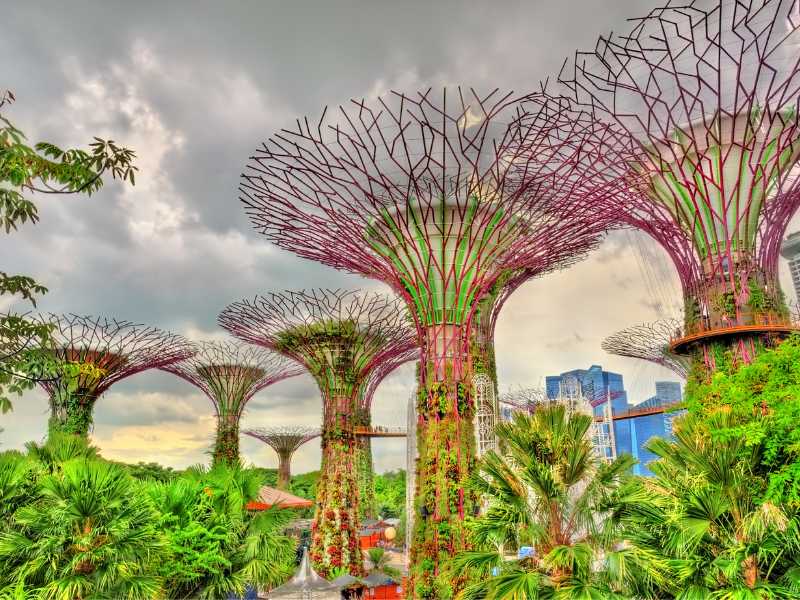 Around the world, landmarks like the Sydney Opera House, Empire State Building, and Eiffel Tower are illuminated in green to celebrate the global influence of Irish culture.
Around the world, landmarks like the Sydney Opera House, Empire State Building, and Eiffel Tower are illuminated in green to celebrate the global influence of Irish culture.
This tradition symbolizes unity and pride for Irish communities worldwide.
WHY PEOPLE WEAR GREEN ON ST PATRICK’S DAY.
1. Association with Ireland
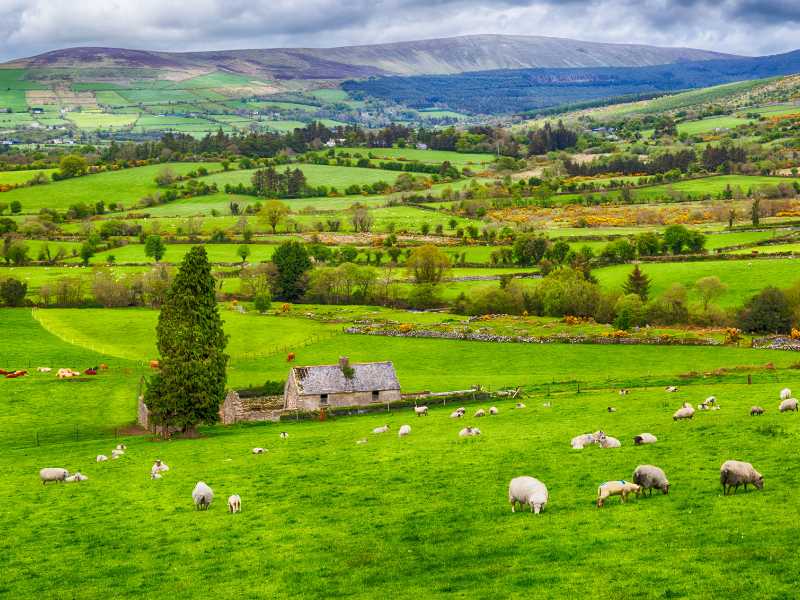 Green is one of the colors in the Irish flag and represents the lush, green landscape of Ireland, famously known as the “Emerald Isle.”
Green is one of the colors in the Irish flag and represents the lush, green landscape of Ireland, famously known as the “Emerald Isle.”
Wearing green is a way to show pride in Irish heritage and culture, particularly on St. Patrick’s Day, which celebrates Ireland’s patron saint, St. Patrick.
2. Leprechaun Folklore
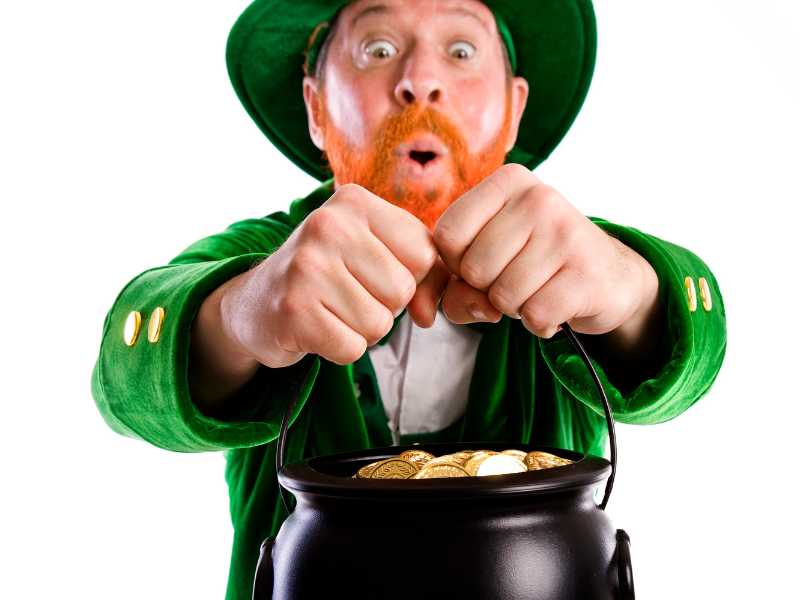 According to Irish folklore, wearing green makes you invisible to leprechauns, mischievous little creatures who are said to pinch anyone they can see.
According to Irish folklore, wearing green makes you invisible to leprechauns, mischievous little creatures who are said to pinch anyone they can see.
This playful tradition is often cited as the reason for wearing green, especially among children, who enjoy the superstition.
3.Symbol-of-Luck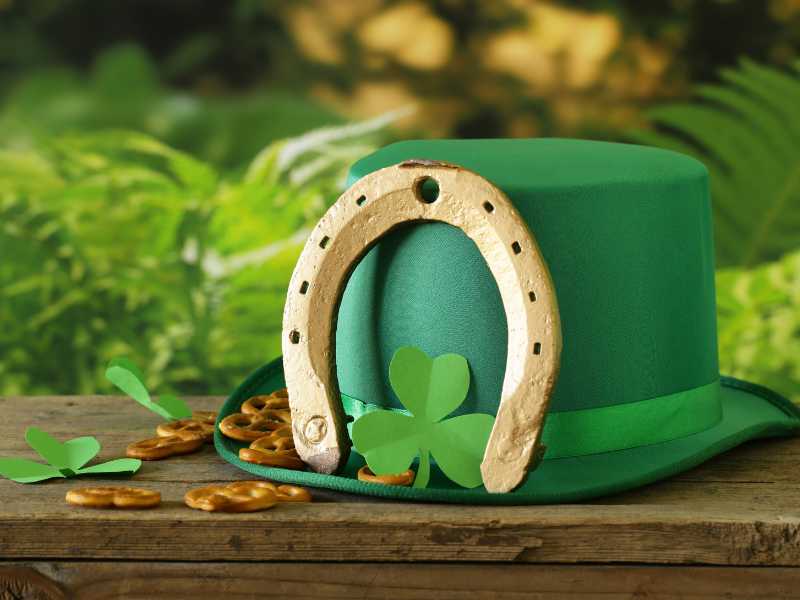
The color green is often associated with good fortune, particularly in Irish culture.
Shamrocks, which are green, are considered lucky symbols, and St. Patrick is said to have used the three-leafed clover to explain the Christian concept of the Holy Trinity to the Irish.
Thus, wearing green on St. Patrick’s Day is also a way to invite good luck.
4. Tradition and Solidarity
 Wearing green has become a widespread tradition on St. Patrick’s Day, even for those who aren’t of Irish descent.
Wearing green has become a widespread tradition on St. Patrick’s Day, even for those who aren’t of Irish descent.
Over time, it has evolved into a fun and festive way for people to join in the celebrations and express solidarity with the global Irish community, contributing to the overall spirit of unity and joy on the holiday.
IS ST PATRICK’S DAY A RELIGIOUS HOLIDAY?
Yes, St. Patrick’s Day originally began as a religious holiday.
It commemorates St. Patrick, the patron saint of Ireland, who is credited with bringing Christianity to the country in the 5th century.
The day, March 17th, marks the anniversary of his death and is observed in Ireland and other countries as a feast day to honor his life and contributions to spreading Christianity.
Traditionally, St. Patrick’s Day was a day of religious observance, with Irish Catholics attending Mass to remember St. Patrick and his missionary work.
Many of the customs, like prayer and attending church services, reflect its religious roots.
However, over time, St. Patrick’s Day has evolved into a more secular celebration, especially outside of Ireland, where it has become a global festival celebrating Irish culture, heritage, and national pride.
In many places, the day now features parades, music, dancing, and wearing green, with less focus on religious practices.
Nonetheless, for those of Irish descent or those who observe the Christian faith, St. Patrick’s Day remains a day with spiritual significance.
St. Patrick’s day traditions is more than just a celebration of Irish heritage; it’s a day that brings people together through a shared love of tradition, culture, and community.
If you are donning green to honor the Irish spirit, enjoying a festive parade, or simply indulging in some delicious Irish fare, this holiday offers a unique opportunity to embrace both the historical and contemporary aspects of Irish identity.
No matter how you choose to celebrate, St. Patrick’s Day is a reminder to celebrate life, good fortune, and the rich cultural legacy that has shaped the world in countless ways.
|
ReplyForward |